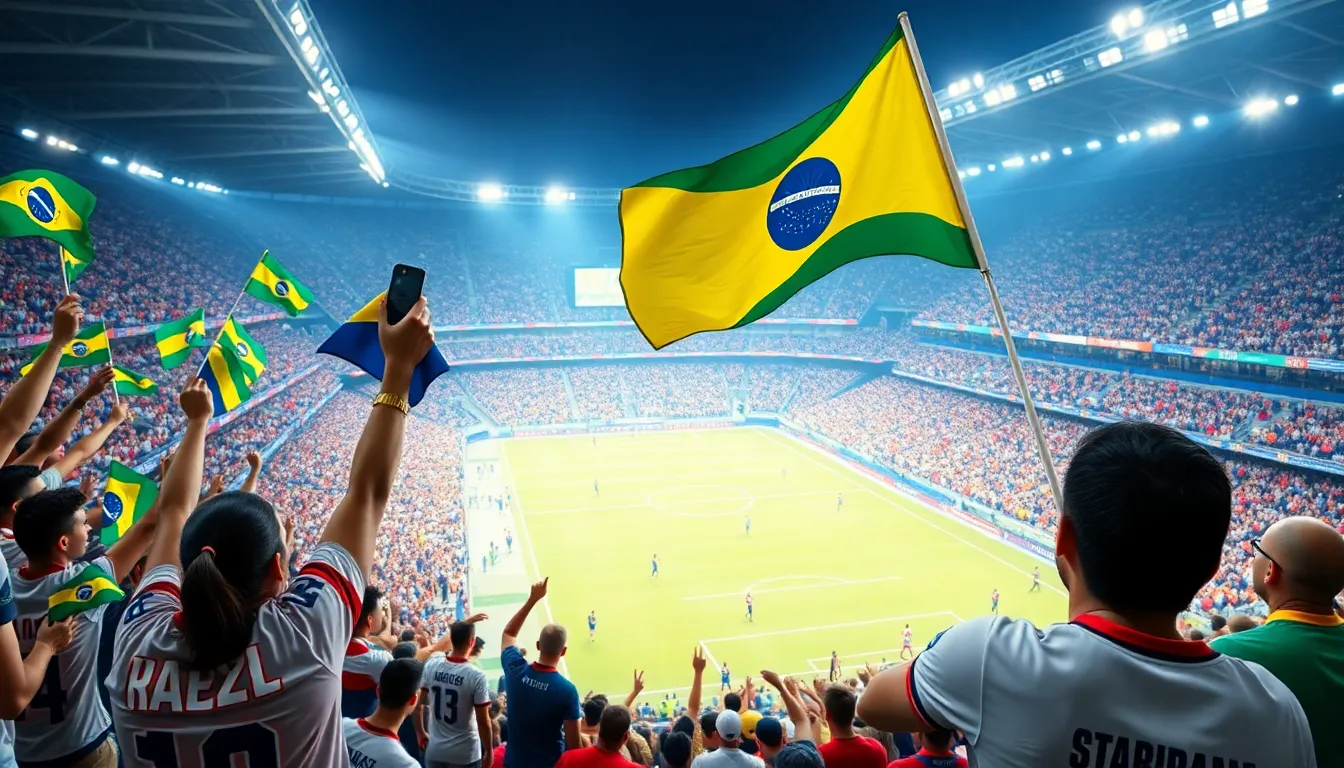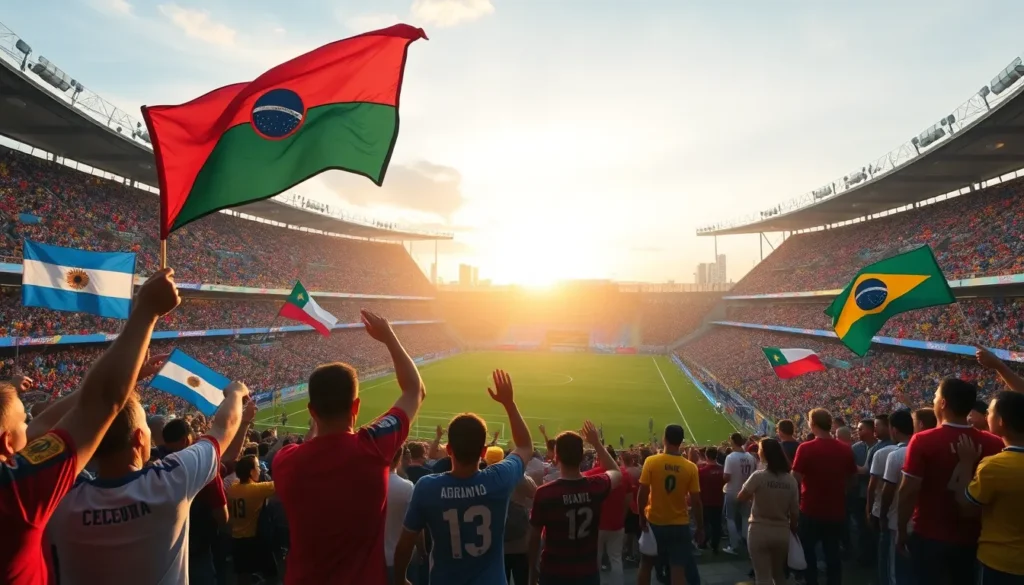Table of Contents
ToggleThe Copa América stands as one of the oldest and most prestigious football tournaments in the world, showcasing the incredible talent of South American nations. Fans eagerly anticipate this thrilling competition, which brings together top teams and players from across the continent. Understanding the tournament’s frequency is essential for those who want to stay updated and engaged with the action.
Typically, the Copa América occurs every four years, but its schedule can vary due to special circumstances or changes in organizing committees. This unpredictability adds to the excitement, making each tournament a highly anticipated event in the football calendar. As the next edition approaches, fans are left wondering when they can expect to see their favorite teams battle for supremacy.
Overview of Copa America
Copa América, founded in 1916, ranks among the oldest international football tournaments. It showcases elite national teams from South America, including Argentina, Brazil, and Chile. The tournament’s reputation stems from its rich history and competitive nature.
The tournament usually occurs every four years. However, exceptional circumstances, such as the COVID-19 pandemic, have led to irregular scheduling. For instance, the 2021 Copa América took place after a one-year delay, generating heightened anticipation. This variability enhances the excitement and engagement among fans.
Each tournament features distinctive formats, with teams competing in group stages followed by knockout rounds. The champion secures not only the prestigious trophy but also a spot in international competitions, such as the FIFA Confederations Cup, adding further incentive for teams. The next Copa América will occur in 2024, keeping fans eager for the upcoming matches.
History of Copa America

Copa América has a rich history that dates back to its inception in 1916. This tournament showcases the best of South American football, evolving significantly over the decades.
Origin and Evolution
Copa América originated in 1916, initiated by the South American Football Confederation (CONMEBOL) to celebrate its 50th anniversary. Initially named the South American Championship, it featured just four teams: Argentina, Brazil, Chile, and Uruguay. Uruguay emerged victorious, setting the stage for future competitions. Over the years, the tournament expanded to include additional nations, with the first edition featuring more teams in 1929. By the mid-20th century, the event became a staple in South American sports culture, with various formats adopted to enhance competitiveness. The tournament’s name changed to Copa América in 1975, reflecting its growing prestige.
Notable Tournaments
Several Copa América tournaments stand out in history for their memorable moments and impactful results:
- 1916: The inaugural tournament, held in Argentina, showcased top talent and kicked off rivalry dynamics.
- 1987: A significant tournament where Uruguay claimed the title, marking its record 12th win.
- 1991: Hosted in Chile, this edition saw Argentina triumph, reaffirming its dominance in South American football.
- 1999: Held in Bolivia, this tournament featured a surprising victory by Brazil, boosting its global football reputation.
- 2019: Hosted by Brazil, this edition celebrated Brazil’s remarkable comeback as champions, after several years without a title.
These tournaments demonstrate the evolving nature and deep-rooted significance of Copa América in the world of football, highlighting its ability to captivate audiences and foster national pride.
Frequency of Copa America
Copa América typically takes place every four years, but variations occur due to specific circumstances. Understanding these variations enhances fans’ excitement and anticipation for upcoming tournaments.
Annual vs. Biennial Tournaments
Copa América was originally held every year until 1986. This annual format changed to a biennial schedule in 1993, offering a consistent four-year gap between tournaments. The introduction of the Copa América Centenario in 2016 marked a special edition, celebrating 100 years of the tournament, with teams from North America participating as well.
Changes in Schedule Over the Years
Over the years, scheduling adjustments occurred for several reasons. The COVID-19 pandemic delayed the 2020 tournament to 2021, showcasing the tournament’s adaptability. Besides global events, changes also stem from the need to align with FIFA’s international calendar, ensuring that star players are available. As a result, the next Copa América is set for 2024, maintaining the anticipation that characterizes this prestigious event.
Importance of Copa America
Copa América plays a crucial role in shaping football in South America and beyond. Its significance extends past the excitement of matches, impacting national pride and the development of the sport.
Impact on South American Football
Copa América influences South American football in various ways.
- Skill Development: The tournament serves as a platform for young players to showcase their talents. Teams often use Copa América to identify emerging stars.
- National Pride: Countries take immense pride in their footballing heritage. Success in Copa América boosts national morale and unity among fans.
- Competitive Experience: Players gain valuable experience competing against top-tier teams. This exposure enhances skill levels and prepares athletes for international club competitions.
- Economic Growth: Hosting the tournament generates revenue for local economies. It’s a boost for tourism, hospitality, and related industries.
Global Relevance
Copa América enjoys global recognition, extending its influence beyond South America.
- International Audiences: The tournament attracts millions of viewers worldwide, showcasing South America’s football talent to a broader audience.
- Cross-Continental Competition: Participation from guest teams, including those from North America, increases the tournament’s prestige and variety of play styles.
- Cultural Exchange: The event promotes cultural exchange through football, emphasizing values of sportsmanship and competition across nations.
- Influence on Global Football: Copa América impacts playing styles and strategies on a global scale, shaping trends in coaching and player development.
Copa América stands as a testament to the rich football heritage of South America while gaining higher status on the international stage.
Copa América continues to be a cornerstone of South American football culture. Its rich history and competitive spirit captivate fans around the globe. The anticipation for the next tournament in 2024 is palpable as supporters look forward to witnessing their favorite teams and players in action. The tournament not only showcases top-tier talent but also strengthens national pride and unity. With its unique formats and storied past, Copa América remains a vital part of the football landscape, promising excitement and unforgettable moments for years to come.




